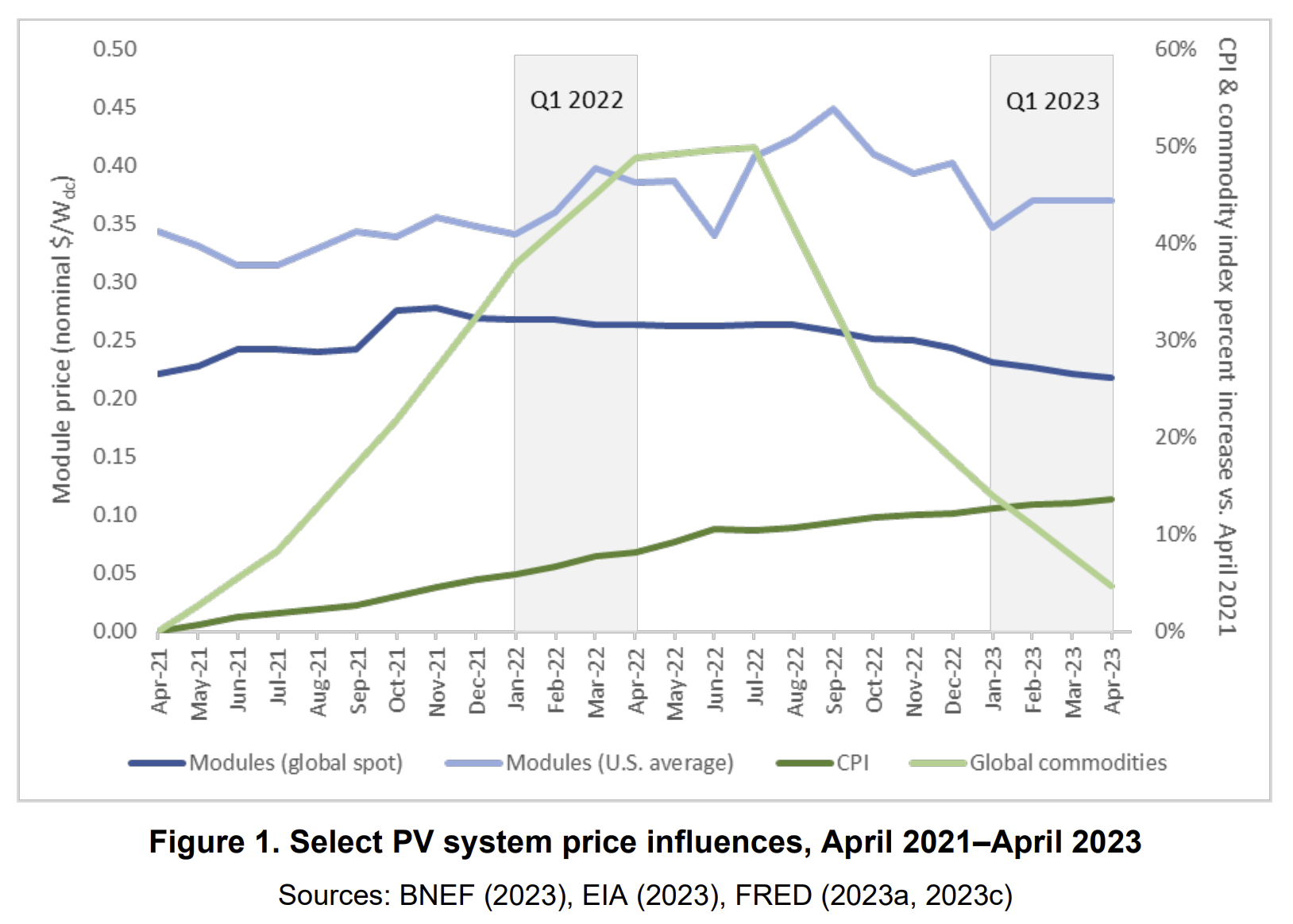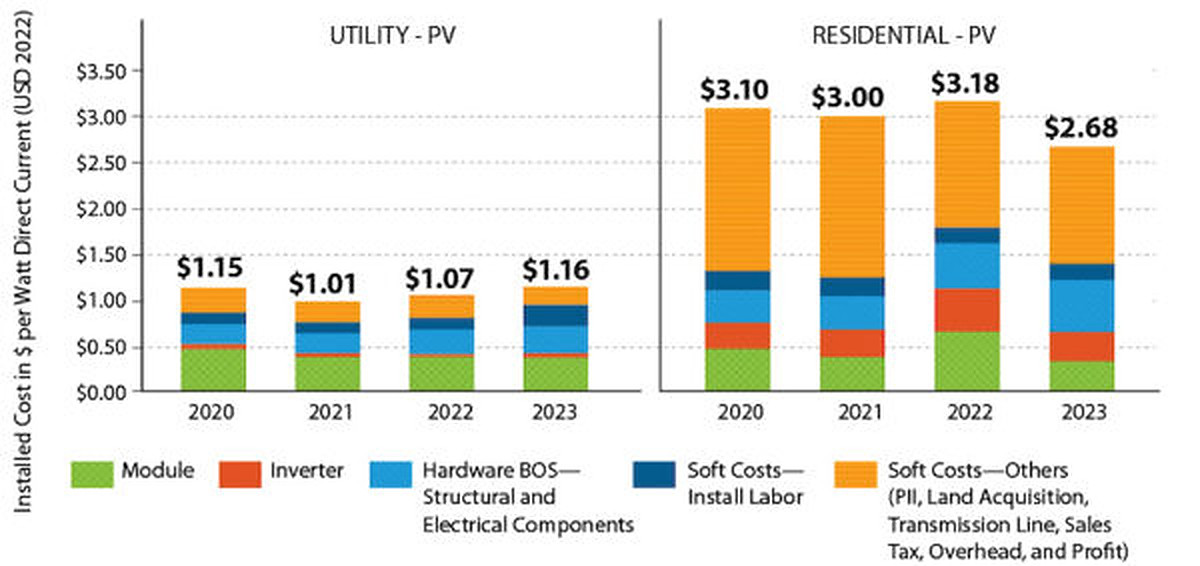From pv magazine USA
NREL, in collaboration with the Solar Energy Technologies Office (SETO), recently released its US Solar Photovoltaic System and Energy Storage Cost Benchmarks, With Minimum Sustainable Price Analysis: Q1 2023.
This year’s analysis indicates a contrasting trend: While utility-scale solar project costs are on the rise, residential project expenses are decreasing. An 8% increase in utility-scale costs can be attributed to rising labor expenses, which have been influenced by the IRA's implementation of new prevailing wage requirements tied to a 30% tax credit. Conversely, residential solar benefitted from reduced prices in modules, inverters, logistics, and customer acquisition, resulting in a 16% overall decrease in residential costs despite rising financing expenses.
For 2023, NREL has refined its cost-modeling methodology by integrating feedback from industry stakeholders and updating its economic assessments to reflect the IRA’s impact on labor and hardware expenses. The analysis now also includes the effects of rising interest rates, which have become a more prominent cost factor than in prior years.
Popular content
The report also reveals that while US module prices decreased from 2022, module prices are still a bit higher than they were in 2021. Commodity market prices for copper and other metals have settled near their 2021 levels, reducing this year’s costs for racking, and for the electrical balance of system. However, with the Consumer Price Index signaling a 15% inflation increase during the covered period, inflation remains a substantial factor in cost increases.
pv magazine print edition
The November issue of pv magazine, due out Thursday, is dominated by the issue of global oversupply and examines the effects of a solar glut in the European Union, the United States, and other markets. We turn the spotlight on PV developments in South Korea, Taiwan, and Africa and update readers on technological progress in thin films, kerfless wafering, and mass produced heterojunction PV.

To continue reading, please visit our pv magazine USA website.
This content is protected by copyright and may not be reused. If you want to cooperate with us and would like to reuse some of our content, please contact: editors@pv-magazine.com.


By submitting this form you agree to pv magazine using your data for the purposes of publishing your comment.
Your personal data will only be disclosed or otherwise transmitted to third parties for the purposes of spam filtering or if this is necessary for technical maintenance of the website. Any other transfer to third parties will not take place unless this is justified on the basis of applicable data protection regulations or if pv magazine is legally obliged to do so.
You may revoke this consent at any time with effect for the future, in which case your personal data will be deleted immediately. Otherwise, your data will be deleted if pv magazine has processed your request or the purpose of data storage is fulfilled.
Further information on data privacy can be found in our Data Protection Policy.